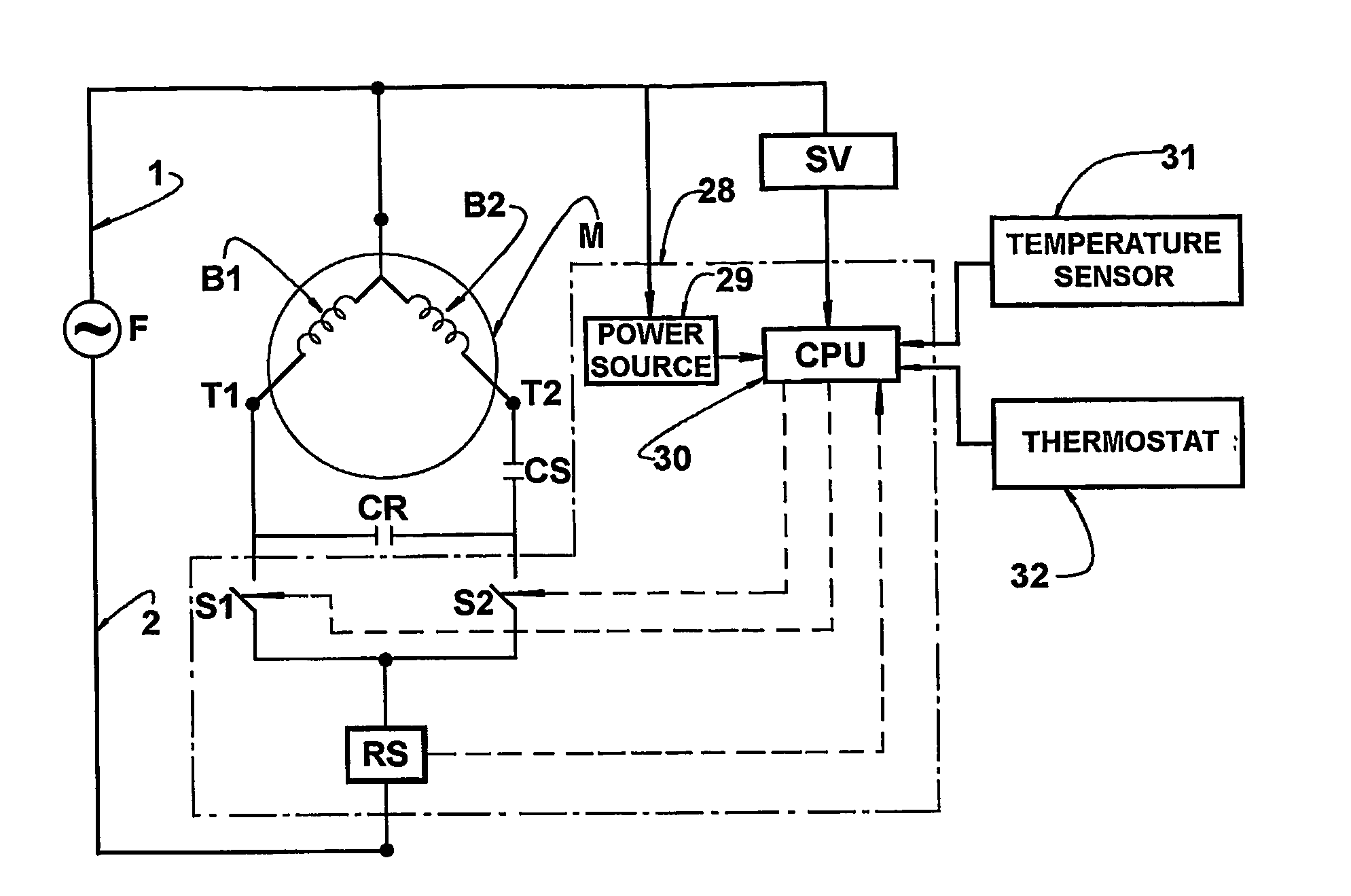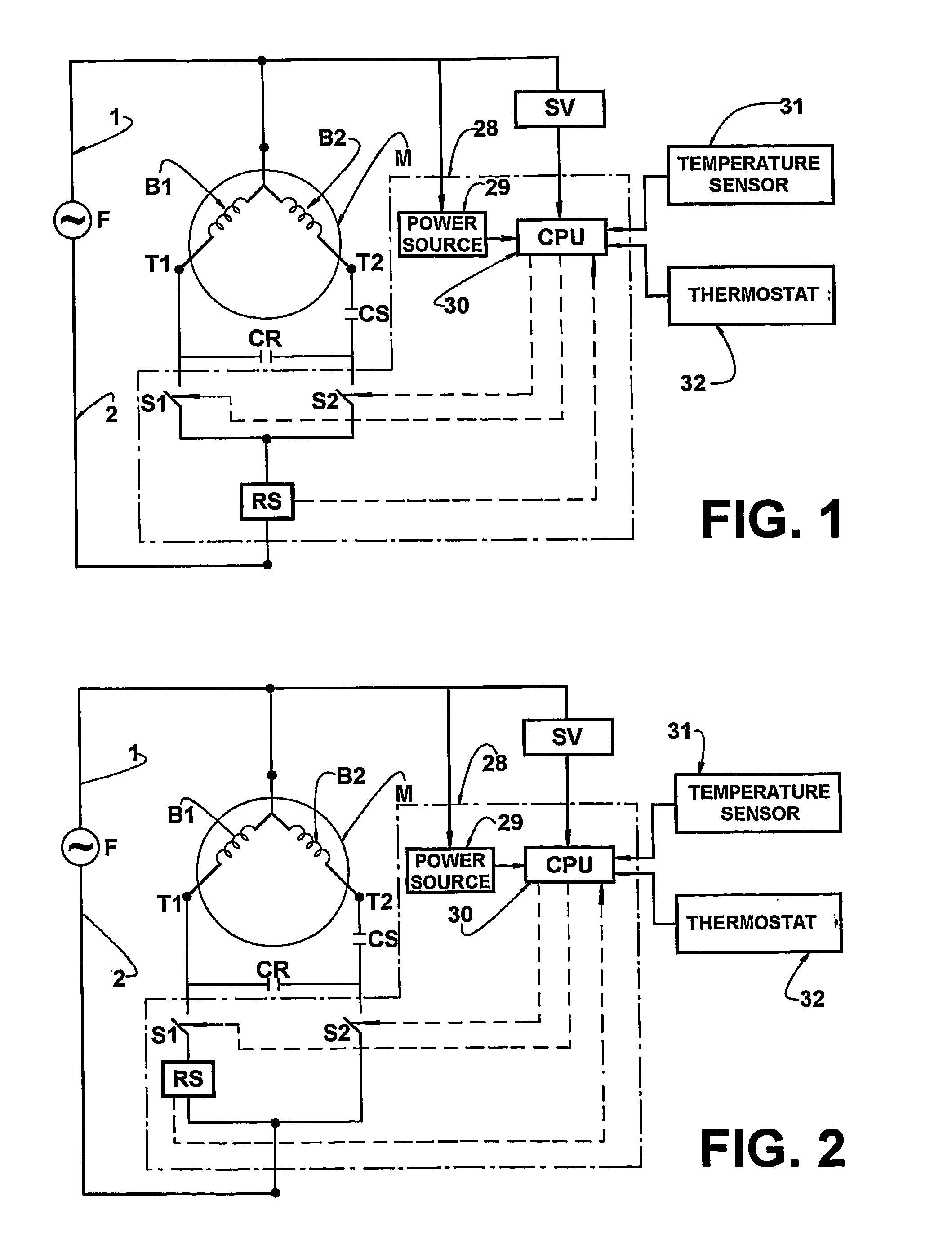Starting device and starting method for a single-phase induction motor
a single-phase induction motor and starting device technology, applied in the direction of single-phase induction motor starters, electric/dynamo-electric converter control, electric/dynamo-electric converter starters, etc., can solve the problems of generating electromagnetic and other noise, unable to use the electric motor in high-efficiency motors, and presenting electrical mechanical relays, so as to reduce the susceptibility to load variation and the effect of accelerating the disassembly of the starting coil
- Summary
- Abstract
- Description
- Claims
- Application Information
AI Technical Summary
Benefits of technology
Problems solved by technology
Method used
Image
Examples
Embodiment Construction
[0031] The starting device for a single phase induction motor of the present invention will be described for a motor comprising: a stator B having a running coil B1 and a starting coil B2; a power source F, which supplies current to both the running coil B1 and the starting coil B2; a running switch S1 and a starting switch S2, respectively connecting the running coil B1 and the starting coil B2 to the power source F when in a closed condition, said starting switch S2 being conducted to an open condition upon completion of the motor start, said starting device comprising a starting circuit 10 including, besides the running switch S1 and the starting switch S2: a current sensor RS connected in series between the power source F and the stator B, in order to detect the current level supplied to the latter; and a control unit 11 supplied by the power source F and receiving, from the current sensor RS, signals representative of the current level being supplied to the stator B and, from a...
PUM
 Login to View More
Login to View More Abstract
Description
Claims
Application Information
 Login to View More
Login to View More - R&D
- Intellectual Property
- Life Sciences
- Materials
- Tech Scout
- Unparalleled Data Quality
- Higher Quality Content
- 60% Fewer Hallucinations
Browse by: Latest US Patents, China's latest patents, Technical Efficacy Thesaurus, Application Domain, Technology Topic, Popular Technical Reports.
© 2025 PatSnap. All rights reserved.Legal|Privacy policy|Modern Slavery Act Transparency Statement|Sitemap|About US| Contact US: help@patsnap.com



